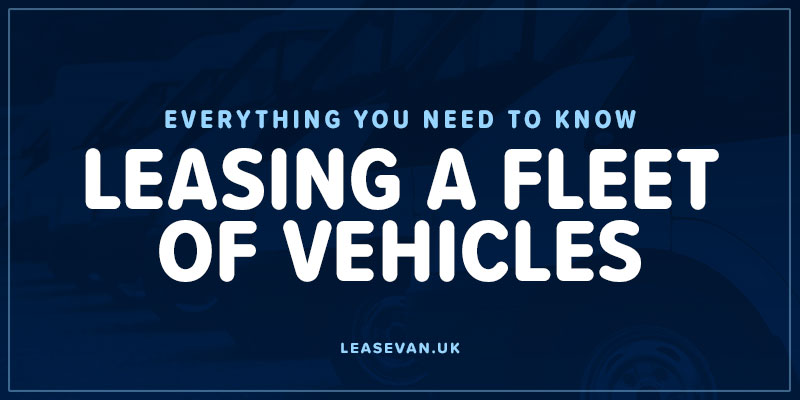
Everything you need to know: leasing more than
one vehicle
Leasing a small group
or fleet of vehicles offers a range of advantages over buying them outright,
but there are many decisions to take. Here is an overview of the most common:
Should I lease or buy outright?
This is a massive
decision and really depends on the business both now, and at the end of the
lease term. Is it better, for example, to pay more per month for a longer
period but eventually own a vehicle, or instead pay less for a limited period but
not own the vehicle at the end of the period? Perhaps you want the vehicles on
a lease purchase basis, so that you have the option of purchasing when the
lease concludes?
Leasing gives you
flexibility when it comes to deciding how many vehicles to replace, and when to
replace them. It also, therefore, needs less capital, allowing you to get the
vehicles you want for a lower cost and avoid diverting monies that could be
used elsewhere. You won't be stung by a vehicle if it becomes obsolete or unfashionable
in the way that a purchaser does; simply return it, at the end of the lease.
Buying outright gives
you more room to manoeuvre if you wish to personalise or modify your vehicles.
For example, we might not let you brand your vans with body paint advertising
your business, as you will be returning the vehicles in 2-4 years. Even a blend
of buying and leasing, and therefore running a mix of branded and unbranded
vans, is not as satisfying as creating a unified image. However, leased
vehicles are regularly updated so your employees may be able to benefit from
the latest technological advances.
Details
With any vehicle as
part of several or leased or on its own – there are four considerations:
·
The make
and model
·
The span
of the lease contract
·
The
estimated mileage
·
Maintenance/servicing
If you're taking on
more than one or a fleet, these considerations might be applied to each vehicle
in turn, or the set as a whole.
You might decide to
choose one utility vehicle, such as a Ford Transit or Citroen Dispatch, for all
of your vehicles, or instead opt for a blend of vehicles of different sizes
(height and length), fuel efficiencies and price depending on the needs of your
business. Working out the maths can be complex and it may be better to contact us
directly with a list of desirable attributes - eg three pick ups, two vehicles
with a minimum height of 1.9 metre and so on - unless you're specifically
bothered about using certain makes and marques.
Span
We generally allow you
to choose between 2-4 years for the length of lease, with an increased rental
cost for the shorter terms. Therefore, the cheapest option is to choose a) the
cheapest model with b) the longest lease term.
However, there may be
penalties for cutting off a lease early, so if keeping the newest models is
important to you it might be more cost-efficient to go for 2-3 years instead.
Mileage
There's a popular
misconception that the mileage limit on a van or car is set for you, at
10-12,000 miles a year. However, this is not the case, and paying for a
tailored, increased allowance could be beneficial. In some cases it's possible
to let a lessee sign up for 50-100,000 miles or even unlimited distances,
across the three years. If your company racks up big miles throughout the lease
it is better to plan early and pay for increased mileage; this will surely save
you a considerable amount compared to the end-of-lease excess mileage charges.
Extras
Check with us if we
can handle insurance, breakdown cover, maintenance, and servicing.
VAT
If you lease a van and
use it purely for business, then you will be able to reclaim 100% of the VAT,
or 50% if it is used for any personal use. These conditions also apply to cars,
lorries, trucks, motorbikes, and any other purely commercial vehicles.
Reclaiming VAT on fuel
is also possible, albeit more complex if any vehicles are driven for both
business and private use. Your drivers, if they commute to work, should keep
detailed mileage records if applicable; find out more on the official
government website.
Returning the vehicle
All vehicles should be
returned in as good a condition as possible, as it will be inspected. Anything
classed as being returned with 'excessive wear and tear' may be subject to a
penalty.
The handbooks should
be in place, all keys should be returned, and all equipment in place, as a
minimum. Note that a few scratches and scuffs are inevitable, and this should
be taken into account. However, returning a vehicle with scuffed bodywork,
damaged interior and upholstery, cracked mirrors, and scuffed alloys is a sure
fire way to incur a charge. Across a group of vehicles those charges will soon
add up, so it is incumbent on drivers to be responsible when out and about.
For more guidance on
this consult the guide created by the BVLA (British Vehicle Rental Association)
as to what constitutes 'fair wear and tear'. According to Business Car Manager, estimated end-of-lease damage charges for the
UK's top 50 contract hire and leasing companies - in effect compensation for
returning a vehicle in a condition below that outlined in the lease agreement -
added up to £45 million for small businesses to fleet budgets in 2012.
Conclusion
Overall, it should be
a smooth process, since most information is listed clearly and easily, so you
should be able to put together an approximate idea of costs before buying. As
ever, the most precise way of eliminating problems and misconceptions is to
contact us directly to clarify any issues.
